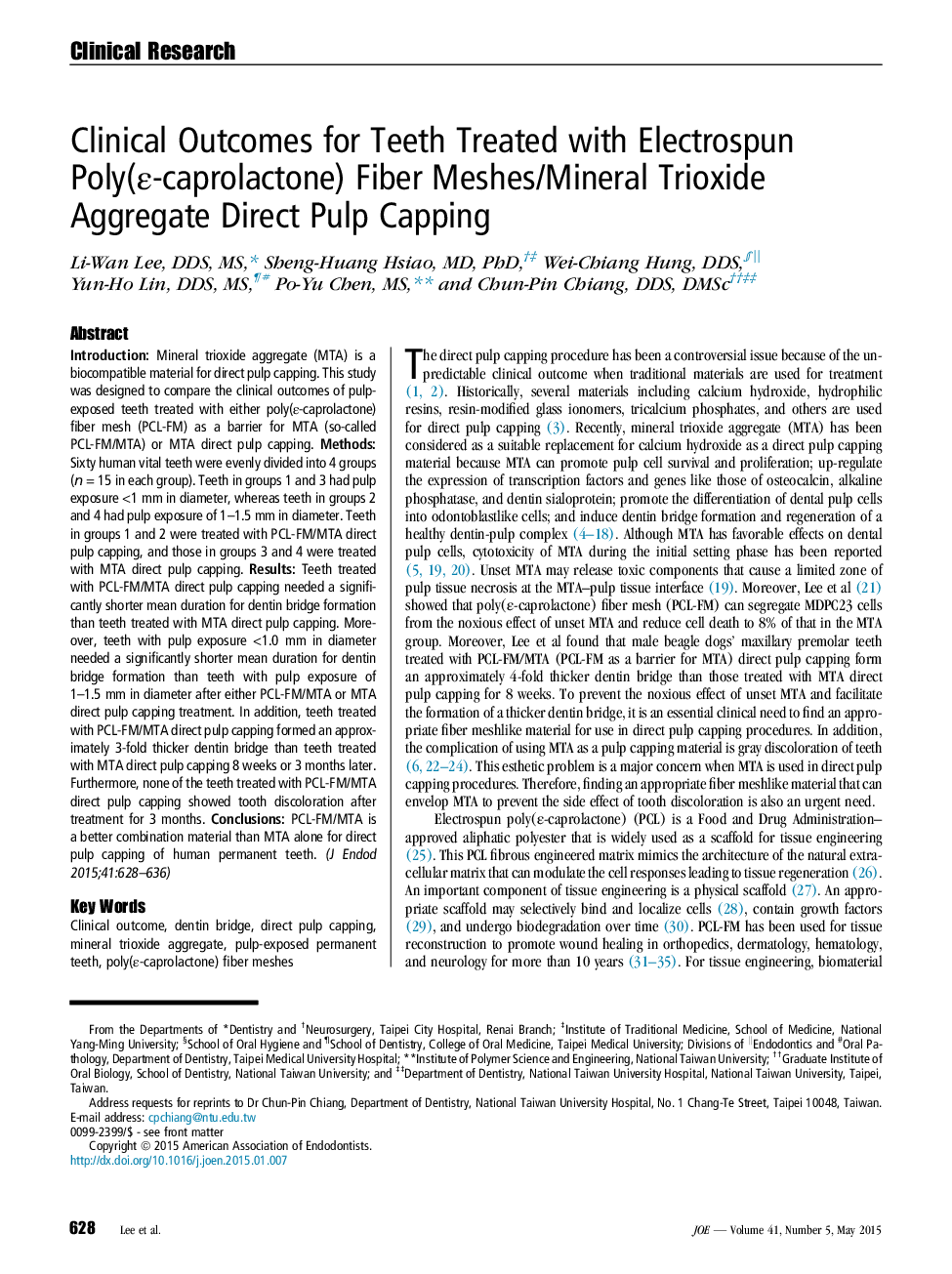| Article ID | Journal | Published Year | Pages | File Type |
|---|---|---|---|---|
| 3150282 | Journal of Endodontics | 2015 | 9 Pages |
IntroductionMineral trioxide aggregate (MTA) is a biocompatible material for direct pulp capping. This study was designed to compare the clinical outcomes of pulp-exposed teeth treated with either poly(ε-caprolactone) fiber mesh (PCL-FM) as a barrier for MTA (so-called PCL-FM/MTA) or MTA direct pulp capping.MethodsSixty human vital teeth were evenly divided into 4 groups (n = 15 in each group). Teeth in groups 1 and 3 had pulp exposure <1 mm in diameter, whereas teeth in groups 2 and 4 had pulp exposure of 1–1.5 mm in diameter. Teeth in groups 1 and 2 were treated with PCL-FM/MTA direct pulp capping, and those in groups 3 and 4 were treated with MTA direct pulp capping.ResultsTeeth treated with PCL-FM/MTA direct pulp capping needed a significantly shorter mean duration for dentin bridge formation than teeth treated with MTA direct pulp capping. Moreover, teeth with pulp exposure <1.0 mm in diameter needed a significantly shorter mean duration for dentin bridge formation than teeth with pulp exposure of 1–1.5 mm in diameter after either PCL-FM/MTA or MTA direct pulp capping treatment. In addition, teeth treated with PCL-FM/MTA direct pulp capping formed an approximately 3-fold thicker dentin bridge than teeth treated with MTA direct pulp capping 8 weeks or 3 months later. Furthermore, none of the teeth treated with PCL-FM/MTA direct pulp capping showed tooth discoloration after treatment for 3 months.ConclusionsPCL-FM/MTA is a better combination material than MTA alone for direct pulp capping of human permanent teeth.
